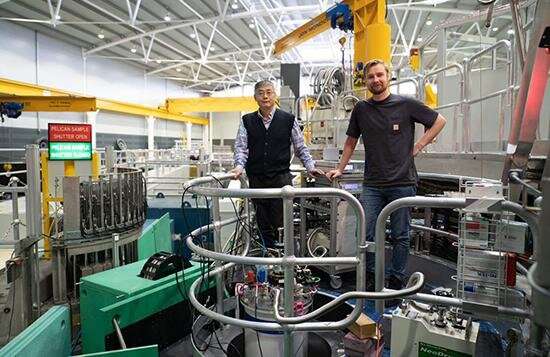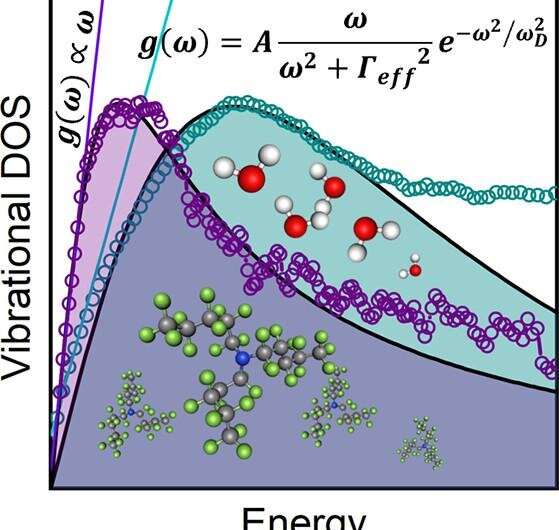Your morning coffee could hasten species’ extinction
Richer nations increase species extinction risk in poorer ones, new University of Sydney and IUCN research finds
Peer-Reviewed PublicationIMAGE: THE US DRIVES 24 PERCENT OF THE EXTINCTION-RISK FOOTPRINT OF THE NOMBRE DE DIOS STREAMSIDE FROG (CRAUGASTOR FECUNDUS), A CRITICALLY ENDANGERED FROG FOUND IN HONDURAS. view more
CREDIT: JOE TOWNSEND
As negotiations before the 15th Conference of the Parties to the Convention on Biological Diversity (COP-15) take place, international research has quantified the impact of human consumption on species extinction risk.
Around 1 million species already face extinction, many within decades, according to the recent Intergovernmental Science-Policy Platform on Biodiversity and Ecosystem Services (IPBES) assessment report.
Spanning more than 5,000 species in 188 countries, the research finds consumption in Europe, North America, and East Asia (such as Japan and South Korea) primarily drives species extinction risk in other countries. Affected species include the Nombre de Dios Streamside Frog in Honduras and the Malagasy Giant Jumping Rat in Madagascar.
Published in Nature: Scientific Reports, the research is led by Ms Amanda Irwin at the University of Sydney’s Integrated Sustainability Analysis research group and is co-authored by the International Union for Conservation of Nature (IUCN) chief scientist Dr Thomas Brooks and chief economist Dr Juha Siikamäki.
The authors liken the biodiversity crisis to the climate one, albeit with less publicity. “These crises are occurring in parallel,” Ms Irwin said. “The upcoming COP-15 will hopefully raise the profile of the other human-driven natural crisis of our generation – irreparable biodiversity loss – and our findings can provide valuable insights into the role that global consumption plays as one of the drivers of this loss.”
Key findings
- Consumption in 76 countries, concentrated in Europe, North America, and East Asia, primarily drives extinction risk in other countries.
- In 16 countries, concentrated in Africa, this extinction-risk footprint is driven by offshore consumption.
- In 96 countries – around half of those studied – domestic consumption is the greatest driver of the extinction-risk footprint.
- International trade drives 29.5 percent of the global extinction-risk footprint.
- Consumption of products and services from the food, beverage and agriculture sectors is the greatest driver of consumption-driven extinction risk, together constituting 39 percent of the global extinction-risk footprint, followed by consumption of goods and services from the construction sector (16 percent).
PhD candidate Ms Irwin said: “The complexity of economic interactions in our globalised world means that the purchase of a coffee in Sydney may contribute to biodiversity loss in Honduras. The choices we make every day have an impact on the natural world, even if we don’t see this impact.”
“Everything that we consume has been derived from the natural world, with raw materials transformed into finished products through a myriad of supply chain transactions. These transactions often have a direct impact on species.”
Co-author, IUCN chief economist Dr Juha Siikamäki notes: “This insight into how prevalently consumption patterns influence biodiversity loss across the globe is critical to inform ongoing international negotiations for nature, including the 15th Conference of the Parties to the Convention on Biological Diversity, which aims to finalise the post-2020 global biodiversity framework later this year.
“The finding from this study that about 30 percent of the global extinction-risk footprint is embedded in international trade underlines the need to consider the responsibilities of different countries and all actors, including financing of conservation, not only in the context of their national boundaries but extending to their impacts internationally.”
Co-author, Associate Professor Arne Geschke from the Integrated Sustainability Analysis research group at the University of Sydney said: “The activities which threaten species in a given location are often induced by consumption patterns in far-away locations, meaning that local interventions may be insufficient.
“Appropriate interventions to address extinction risk in Madagascar, for example, where 66 percent of the extinction-risk footprint is exported, should be different from those implemented in Colombia, where 93 percent of the extinction-risk footprint is generated by domestic consumption.”
CAPTION
The extinction risk of the the Malagasy Giant Jumping Rat in Madagascar
is increased by consumption in other countries.
CREDIT
Josh More.
About the study
Using data available in IUCN’s Red List of Threatened Species, the authors introduced the non-normalised Species Threat Abatement and Restoration (nSTAR) metric as a measure of extinction risk.
They then applied the methodology widely-used to quantify carbon footprints – of which the Integrated Sustainability Analysis research group is a world leader – to link this extinction risk to global consumption patterns using the global supply chain database Eora.
An extinction-risk footprint was calculated by species, by economic sector, for 188 countries.
Co-author Associate Professor Arne Geschke previously co-wrote a Nature paper that demonstrated international trade is a key driver of biodiversity threats.
This new paper is a collaboration between the University of Sydney, IUCN, Newcastle University (UK) and the International Institute for Sustainability in Brazil.
JOURNAL
Scientific Reports


.png)